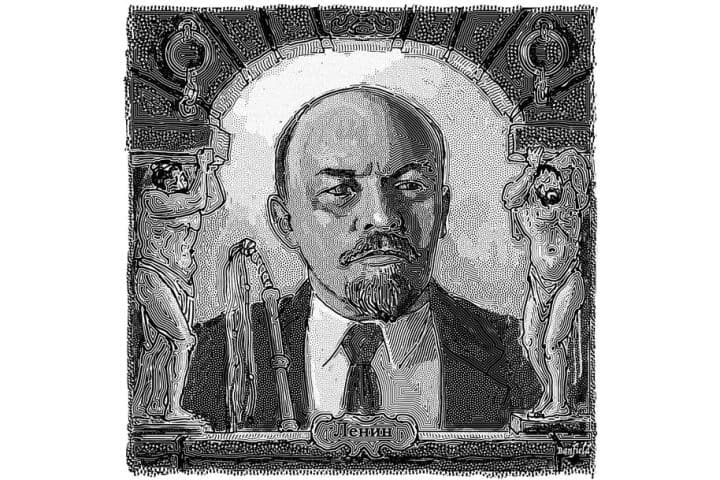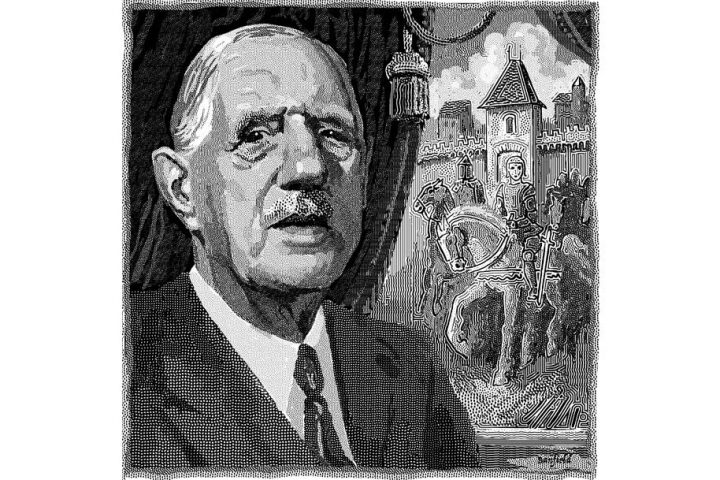Books Reviewed
Writing a biography of Joseph Stalin is a monumental task, which he made as difficult as possible. He left no diary; nor did he spill his soul as Adolf Hitler did in Mein Kampf. He had many of his family, friends, and acquaintances arrested or killed, leaving us with few accounts of his personal life besides the ones he authorized for propaganda purposes. Those who knew him well and survived—like fellow revolutionaries Vyacheslav Molotov, Lazar Kaganovich, and Anastas Mikoyan—had their own reasons after his death to refrain from offering honest portraits. Even after the opening of the Soviet archives, it became clear that Stalin had carefully curated his papers to leave the image he intended for posterity. So how does a historian get inside the head of one of the most infamous figures of the 20th century?
Stephen Kotkin, the John P. Birkelund ’52 Professor in History and International Affairs at Princeton University, has written two massive volumes, totaling more than 2,000 pages, on Stalin’s life through 1941, attempting to do just that. The first, Stalin: Paradoxes of Power (2014), covers his upbringing and rise to dominance in the Communist Party of the Soviet Union. The second, Stalin: Waiting for Hitler (2017), begins in 1929 and runs to the start of the Second World War. A third, covering the last 12 years of Stalin’s life, is forthcoming in late 2019.
* * *
These volumes represent a remarkable accomplishment. Fully understanding it requires an appreciation of the historiographic debates surrounding Stalin, the object of some of the most virulent arguments among historians and political scientists over the past six decades. Starting in the 1950s, the history of the early USSR was contested by two schools of thought: the totalitarians and the revisionists. The former, beginning with Hannah Arendt and Zbigniew Brzezinski, explicitly argued the equivalency of Nazi Germany and the Soviet Union, grouping them together under the moral and political regime type of “totalitarianism.”
Beginning soon after, but growing in strength with the rise of the New Left in the 1960s, the revisionists—primarily historians—argued that the field of Soviet studies was too cozy with the U.S. government. They claimed comparing Nazi Germany and the Soviet Union was illegitimate (they preferred comparisons with capitalism), and proposed that there was considerable social support for the Soviet regime under Stalin. They sought to write “bottom-up” history, exploring the social and class basis for the 1917 October Revolution’s success and the interplay between leaders and society. They illuminated Soviet society and life in ways that the Totalitarians had ignored, but sometimes at the cost of minimizing Soviet crimes.
Both sides had clear political views. The totalitarians saw the Cold War as a struggle between good and evil: many regarded Stalin as ideologically consistent with V.I. Lenin, and Communism itself as one reason for Stalin’s horrific brutality. On the other side, a not insignificant number of revisionists were Marxists who hoped to rediscover in Lenin or Leon Trotsky reclaimable models for the West. Beginning with Isaac Deutscher’s three-volume biography of Trotsky entitled The Prophet (1954-63) and Stephen Cohen’s Bukharin and the Bolshevik Revolution (1974), they argued that Stalin’s campaign of violence betrayed the basic principles of Marxism-Leninism—Communism misapplied. Some early revisionists went to comical lengths to dissociate Stalin from Communism, or minimize the crimes of Lenin. But over a decades-long tussle the revisionists gradually prevailed, and by 1989 they dominated faculty hiring, publication, and graduate training.
The Soviet Union’s collapse challenged revisionist hegemony, undermining—to say the least—their thesis that the Soviet state was supported by social consensus. It was clear that the regime had been maintained through coercion on a vast scale, absent which it collapsed. The opening of the Soviet archives after 1991 also challenged common beliefs on both sides of the historical debate.
* * *
Kotkin helped pioneer a new path in Soviet historiography with his outstanding Magnetic Mountain (1995). In a detailed exploration of Magnitogorsk—a planned Soviet industrial city—he offered the idea of Stalinism as its own “civilization.” He explored daily life, detailing how people learned to “speak” Soviet—adopting identities prescribed to them by state ideology and propaganda. By offering a new exploration of “Stalinist modernity” that transcended “top-down” or “bottom-up” approaches, he helped the field move past the divisions of Cold War historiography.
Kotkin has continued his path-breaking approach in Stalin. The work draws from a staggering array of secondary sources—in five languages—as well as citing frequently from 14 Russian and Georgian archives. In total, the footnotes and bibliography in the first two volumes stretch 377 pages, printed in tiny font. From the vantage of this mountain of research, Kotkin proffers the most complete picture of the dictator to date.
He begins by admitting that his work is as much “a history of the world” as a biography, given the subject. He proceeds accordingly: in the first part of the three-part first volume, Josef Djugashvili (Stalin’s birth name) appears infrequently. Instead, Kotkin details Stalin’s historical moment, enabling him to debunk many myths about the future dictator. There was nothing in Stalin’s childhood or revolutionary experience to suggest some unique talent for violence or destruction; the myth of his being beaten as a child and forming a malevolent character looks ridiculous when compared to the stories of his fellow revolutionaries. Had Czarist Russia not collapsed in February 1917 amidst the horrors of World War I, Stalin would have been lost to history as just another minor, failed revolutionary.
* * *
In the aftermath of the Bolshevik Revolution and the Russian Civil War, Stalin became General Secretary of the Communist Party. Kotkin examines Stalin’s opportunism in part two of the book, showing how Stalin took this largely administrative position overseeing party membership and appointments and built it into a “personal dictatorship within the dictatorship,” allowing him to cultivate the younger generation of rising Bolshevik leaders. Stalin’s opponents—Trotsky, Lev Kamenev, Nikolai Bukharin, and others—lacked his drive, discipline, and organizational abilities, and were incapable of uniting to block his consolidation of power. Only Lenin’s Testament, a political will that damned both Stalin and Trotsky, stood as an impediment to his final succession. But even that obstacle he overcame with political cunning and a reliable circle of allies.
In part three Kotkin explores the “Great Turn,” Stalin’s decision to embark on collectivization, an extremely risky program of agricultural reform. In 1928, Soviet peasants stopped selling their grain to the state in the face of low fixed prices and a lack of goods to buy. Stalin’s response was to order vast seizures of grain and then, beginning in 1929, to initiate collectivization. This entailed rounding up and deporting millions of “rich” peasants—who were supposedly hoarding grain—while simultaneously seizing and reorganizing the Soviet Union’s land into state-owned collective farms. Met by massive resistance, collectivization threw the Soviet Union into a low-level civil war for the next four years. Some of the seized grain and meat went to feed Soviet cities. But, more importantly for Stalin, much of the seized food was sold overseas for financial capital to buy machine tools and industrial equipment, which in turn he used to build more factories and expand the Soviet working class. The human cost was a famine that exploded in 1931-32, killing between five and seven million people—a year in which Stalin ordered the export of 4.8 million tons of grain.
Debates over the famine and collectivization have centered on two questions: did Stalin intend to starve so many Soviet citizens to death, and did collectivization mark a continuity or break with Lenin? To the first, Kotkin replies no, the famine was not intentional. To the second, the answer, supported by mounds of evidence, is clearly yes. For Stalin, building socialism was impossible without collectivization: it was this “straitjacket of Communist ideology” and Stalin’s utterly ruthless commitment to it that spelled death for so many millions.
Kotkin ends Paradox of Power with a counterfactual: what if Stalin had died before assuming absolute power? Here, he argues, the role of an individual in history matters. Without a person of Stalin’s ruthless ambition and political skills, the entire Soviet project might have collapsed: “if Stalin had died, the likelihood of forced wholesale collectivization—the only kind—would have been near zero, and the likelihood that the Soviet regime would have been transformed into something else or fallen apart would have been high.” Only Stalin could have, or would have, carried out collectivization.
The leader who emerges from Kotkin’s first volume is not a madman but an internally consistent revolutionary following the logic of his worldview. No doubt to the chagrin of some readers, this Stalin is undeniably a Communist. In fact, among his associates, Stalin stood out as a particularly disciplined ideologue: “Many were attracted to Stalin because of his tenacious dedication to the revolutionary cause.” Blinded in part by this dedication, few in Stalin’s inner circle saw signs of the despot he would become.
* * *
Waiting for Hitler faces an even more daunting set of historiographic challenges because the evidence base becomes thinner, the memoirs of Soviet defectors and exiles sparser and less reliable. In the Soviet archives, much remains off limits or has been destroyed—and much material was never committed to paper during the bloodiest periods of internal repression. Fierce arguments over ideology, death tolls, and Stalin’s culpability have left numerous minefields for historians.
Kotkin organizes his second volume, like his first, into three parts. The first resumes the discussion of collectivization and the resulting famines; the second limns the Great Purge; and the last deals with Stalin’s decision to seek a pact with Adolf Hitler in 1939, followed by the outbreak of World War II.
Perhaps the most contentious debate among historians of Russia over the past 40 years centers on the Great Purge. The horrific violence Stalin unleashed between 1936 and 1938 is almost impossible to fathom. Never in history had a leader murdered so many of his own elites and bureaucrats—including old friends and many relatives—while simultaneously executing vast numbers of those tasked with the actual executions themselves. About one in every hundred Russians was arrested, with somewhere around 700,000 executed in less than two years. The army was decapitated, with 30,000 officers executed, arrested, or dismissed. Huge numbers of the diplomatic corps, intelligence services, and secret police were similarly slaughtered. What is perhaps most shocking is that, at the end of it all, Stalin acknowledged to the politburo that the vast majority of those shot or arrested—1.6 million people—had not been spies or guilty of any crime. Given that he had signed so many death warrants himself, Stalin’s monstrousness is hard to grasp.
* * *
Why did he unleash murder on such a vast scale? Kotkin dismisses the old argument that Stalin was simply a psychopath. He also rejects the notion that the suicide of Stalin’s second wife in 1932 permanently warped him. He examines and dismisses the idea that Stalin had his close associate Sergei Kirov assassinated in 1934 as an excuse to start the purges and consolidate power, a mainstream view among many historians today.
Instead, Kotkin concludes, “the terror emanated from Stalin’s mind, not as a response to crisis but as a theory of Soviet history and his rule.” In particular, Stalin sought to punish and educate the party for its criticisms of his collectivization drive. This pedagogical impulse resurfaces again and again in Kotkin’s explanation of Stalin in the 1930s, a truly novel contribution. Stalin’s obsession with writing the country’s political and historical textbooks personally hints at his view of himself—in some perverse way—as a teacher.
In the final part of Waiting for Hitler, Kotkin’s timeline slows down—covering 1939 to 1941 in 350 pages—and his writing is at its most engrossing. In August 1939 Stalin, who had been negotiating a collective security pact with Great Britain and France, suddenly performed an about-face and signed the infamous Molotov-Ribbentrop Pact with Hitler. Why? Half blinded by the purges, which had eliminated much of Soviet foreign intelligence and the Soviet diplomatic corps, he relied on his ideological worldview as he played what Kotkin calls “Three-Card Monte.” This was a triangular game of bluff among Hitler, Stalin, and Britain’s Neville Chamberlain to steer when and where the coming war would begin. Stalin’s aim was to entangle Germany and the Western powers into a long conflict from which he might benefit. To pick which side he would ally with Stalin held an “auction for spheres of influence in Eastern Europe.” Hitler won.
Stalin’s gamble failed, of course. As a result, for the next 18 months, Hitler had the initiative, overrunning much of Europe. During this period, Stalin supplied staggering quantities of oil and other raw materials to feed Hitler’s war machine, secure in his belief that Hitler would not dare start a two-front war. This false notion convinced him that Hitler’s build-up for invasion in 1940-41 was merely a negotiating tactic aimed at compelling the Soviet Union to provide more raw materials to Germany. It was a nearly fatal miscalculation, a product of the purges and Stalin’s ideological blinders. When Hitler struck in June 1941, the Soviet Union was completely unprepared militarily or institutionally. The Red Army would suffer five million casualties in the war’s first six months.
* * *
What turned Joseph Djugashvili into one of the most murderous dictators of all time? Stephen Kotkin’s work provides several theories, one of which restates the power of ideas and ideology: Communism defined Stalin. In addition, the possession of near absolute power eroded whatever hesitations or limitations he might have felt to the use of mass murder as a political tool. Although Kotkin’s pedagogical explanation of the purges is compelling, no document emerges to reveal the full truth, even here. By the end of these two books, which by dint of their quality of research and quality of writing are likely to be the definitive treatment for a long time, Stalin has become the blood-soaked monster famous in the pages of history. But as he becomes that figure, his thought process becomes ever more opaque. Perhaps Kotkin’s third and final volume will penetrate that mystery, too.







